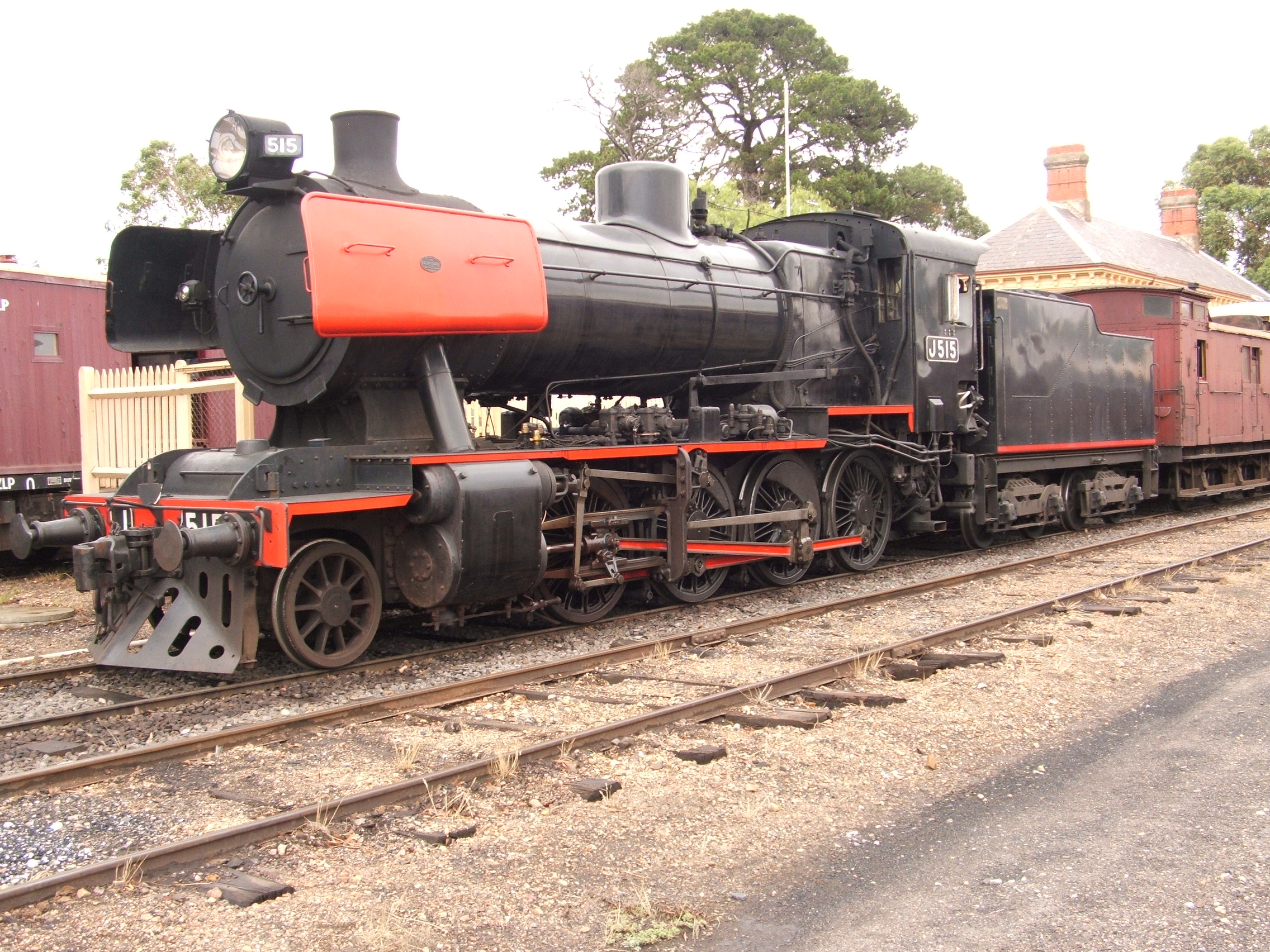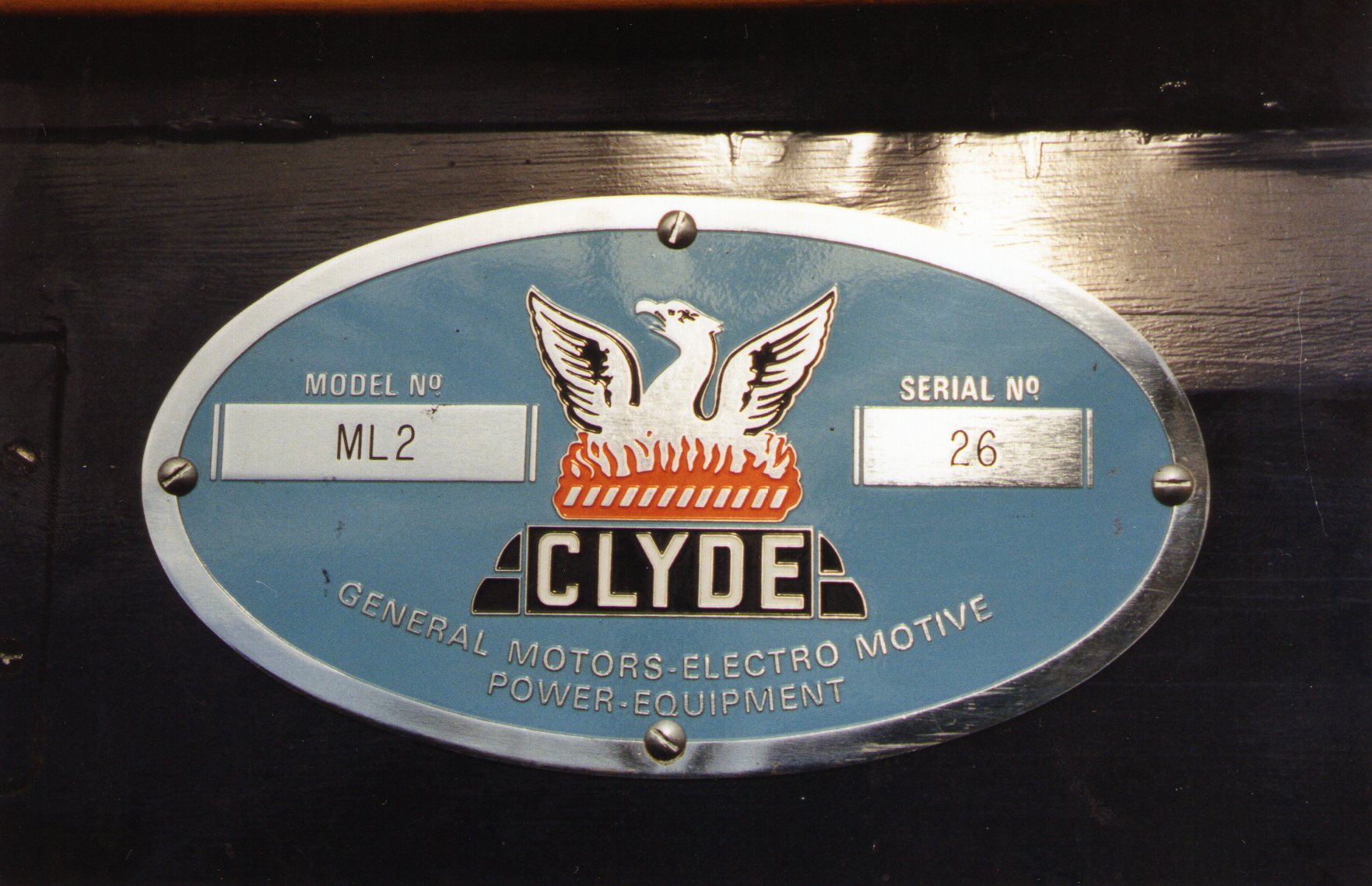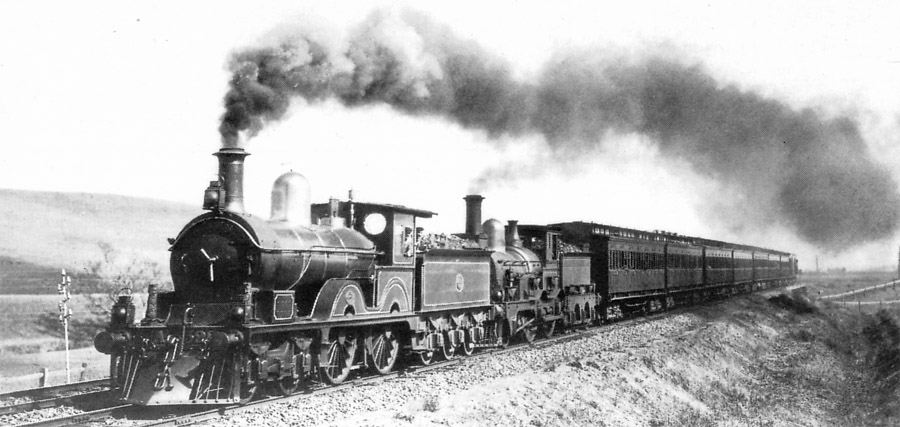|
Victorian Railways S Class
The Victorian Railways S class was a class of 4-6-2 express passenger steam locomotive operated by the Victorian Railways (VR) in Australia between 1928 and 1954. Built when the VR was at its zenith and assigned to haul the broad gauge-leg of its Melbourne to Sydney interstate express passenger services, the S class remained the VR's most prestigious locomotive class until the advent of diesel electric locomotives in the early 1950s. They were the first Pacific-type locomotives on the VR, as well as its first 3-cylinder locomotive type. Renowned for their power and speed, in the ten years that followed their introduction the running time of the premier Sydney express service they operated was progressively reduced by one and a half hours. These service improvements culminated in 1937 with the replacement of the ''Sydney Limited'' with the Art Deco streamliner ''Spirit of Progress'', and the S class locomotives were fitted with streamlined casings to match the new train s ... [...More Info...] [...Related Items...] OR: [Wikipedia] [Google] [Baidu] |
Newport Workshops
The Newport Railway Workshops is a facility in the Melbourne suburb of Newport, Victoria, Newport, Australia, that builds, maintains and refurbishes Rolling stock, railway rollingstock. It is located between the Williamstown railway line, Williamstown and Werribee railway lines. History Plans for a workshop at Newport started in the 1860s, to replace the temporary Williamstown Workshops but nothing came of it. It was not until 1880 that work began, when the Victorian Railways purchased annexes used at the Melbourne International Exhibition (1880), 1880 Melbourne Exhibition and erected one of them at Newport, naming it the Newport Carriage Workshops when it began operation in 1882. Construction of the permanent workshops commenced in 1884, and was completed in 1889. Although the earlier carriage workshop closed at this time, it reopened in 1895 to manufacture signal equipment. The first Railroad car, carriages built by the workshops were completed in 1889, but locomotives were ma ... [...More Info...] [...Related Items...] OR: [Wikipedia] [Google] [Baidu] |
Spirit Of Progress
The ''Spirit of Progress'' was the premier express passenger train on the Victorian Railways in Australia, running from Melbourne to the New South Wales border at Albury, and later through to Sydney. Route From its introduction in November 1937 until April 1962, the train service ran on broad gauge line from Melbourne's Spencer Street station to Albury, on the New South Wales / Victorian border, where passengers changed to a New South Wales Government Railways train (the ''Melbourne Limited Express''), running on standard gauge track to complete the journey to Sydney. Following the completion of the standard gauge line between Melbourne and Albury in April 1962, the ''Spirit of Progress'' was extended to Sydney. Broad gauge service (1937–1962) The ''Spirit of Progress'' ushered in a standard of passenger train speed and comfort not previously seen in Australia. Its introduction in November 1937 marked the culmination of many years of preparatory work by the Victori ... [...More Info...] [...Related Items...] OR: [Wikipedia] [Google] [Baidu] |
2-8-0
Under the Whyte notation for the classification of steam locomotives, represents the wheel arrangement of two leading wheels on one axle, usually in a leading truck, eight powered and coupled driving wheels on four axles, and no trailing wheels. In the United States and elsewhere, this wheel arrangement is commonly known as a Consolidation, after the Lehigh and Mahanoy Railroad’s ''Consolidation'', the name of the first 2-8-0.White, John H. Jr. (1968). ''A history of the American locomotive; its development: 1830-1880''. New York: Dover Publications, p. 65. The notation 2-8-0T indicates a tank locomotive of this wheel arrangement, the "T" suffix indicating a locomotive on which the water is carried in side-tanks mounted on the engine rather than in an attached tender. The Consolidation represented a notable advance in locomotive power. After 1875, it became "the most popular type of freight locomotive in the United States and was built in greater quantities than any other si ... [...More Info...] [...Related Items...] OR: [Wikipedia] [Google] [Baidu] |
Victorian Railways K Class
The K class was a branch line steam locomotive that ran on Victorian Railways in Australia from 1922 to 1979. Although its design was entirely conventional and its specifications unremarkable, the K class was in practice a remarkably versatile and dependable locomotive. It went on to outlast every other class of steam locomotive in regular service on the VR, and no fewer than 21 examples of the 53 originally built have survived into preservation. History The K class was the first design from the VR Locomotive Design Section under the stewardship of Alfred E Smith as Chief Mechanical Engineer. The Locomotive Design Section had introduced successful mainline and branchline passenger locomotives with the A2 class and Dd class 4-6-0s, and had recently improved mainline goods services with the C class 2-8-0. They now turned their attention to a requirement for a more powerful branchline goods locomotive, and in 1922 produced a lighter 2-8-0 "Consolidation" locomotive with a a ... [...More Info...] [...Related Items...] OR: [Wikipedia] [Google] [Baidu] |
The Sydney Morning Herald
''The Sydney Morning Herald'' (''SMH'') is a daily compact newspaper published in Sydney, New South Wales, Australia, and owned by Nine. Founded in 1831 as the ''Sydney Herald'', the ''Herald'' is the oldest continuously published newspaper in Australia and "the most widely-read masthead in the country." The newspaper is published in compact print form from Monday to Saturday as ''The Sydney Morning Herald'' and on Sunday as its sister newspaper, '' The Sun-Herald'' and digitally as an online site and app, seven days a week. It is considered a newspaper of record for Australia. The print edition of ''The Sydney Morning Herald'' is available for purchase from many retail outlets throughout the Sydney metropolitan area, most parts of regional New South Wales, the Australian Capital Territory and South East Queensland. Overview ''The Sydney Morning Herald'' publishes a variety of supplements, including the magazines ''Good Weekend'' (included in the Saturday edition of ''Th ... [...More Info...] [...Related Items...] OR: [Wikipedia] [Google] [Baidu] |
Portland Guardian
''The Portland Guardian'' was a weekly newspaper published between 1842 and 1964 in the seaport town of Portland, Victoria, Australia. It was known as the ''Portland Guardian and Normanby General Advertiser'' from 1842 to 1876. It was founded by Thomas Wilkinson and James Swords, and was the second newspaper to be launched in country Victoria. It was eventually absorbed by local rival ''Portland Observer'', with the final issue appearing on 26 March 1964.Kirkpatrick, R. 2010, The bold type: a history of Victoria’s country newspapers, 1840-2010, Victorian Country Press Association Ltd, Ascot Vale, p. 216 See also * List of newspapers in Australia This is a list of newspapers in Australia. For other older newspapers, see list of defunct newspapers of Australia. National In 1950, the number of national daily newspapers in Australia was 54 and it increased to 65 in 1965. Daily newspape ... References External links * *Digitise''World War I Victorian newspapers''from ... [...More Info...] [...Related Items...] OR: [Wikipedia] [Google] [Baidu] |
4-6-0
A 4-6-0 steam locomotive, under the Whyte notation for the classification of steam locomotives by wheel arrangement, has four leading wheels on two axles in a leading bogie and six powered and coupled driving wheels on three axles with the absence of trailing wheels. In the mid-19th century, this wheel arrangement became the second-most-popular configuration for new steam locomotives in the United States, where this type is commonly referred to as a ten-wheeler.White, John H., Jr. (1968). ''A history of the American locomotive; its development: 1830-1880''. New York, NY: Dover Publications. p. 57. As locomotives pulling trains of lightweight all-wood passenger cars from the 1890 to the 1920s, they were exceptionally stable at near speeds on the New York Central's New York-to-Chicago Water Level Route and on the Reading Railroad's line from Camden to Atlantic City, New Jersey. Overview Tender locomotives During the second half of the nineteenth and first half of the twenti ... [...More Info...] [...Related Items...] OR: [Wikipedia] [Google] [Baidu] |
Victorian Railways A2 Class
The A2 class was an express passenger locomotive that ran on Victorian Railways from 1907 to 1963. A highly successful design entirely the work of Victorian Railways' own design office, its long service life was repeatedly extended as the Great Depression and later World War II delayed the introduction of more modern and powerful replacement locomotives. History The introduction of the A2 class marked a turning point in Victorian Railways locomotive design, as it was entirely designed by VR engineers of the newly established Locomotive Design Section and the entire class built in-house at Victorian Railways workshops.Pearce et al., p. 12 Production Based on the success of the prototype A2572, a total of 125 Stephenson valve gear A2 locomotives were built between 1907 and 1915. The design was then altered to incorporate larger diameter cylinders, a higher pressure boiler and Walschaerts valve gear, and a further 60 locomotives of that design were produced between 1915 and 1922. ... [...More Info...] [...Related Items...] OR: [Wikipedia] [Google] [Baidu] |
Williamstown North
Williamstown North is a suburb in Melbourne, Victoria, Australia, south-west of Melbourne's Central Business District, located within the City of Hobsons Bay local government area. Williamstown North recorded a population of 1,622 at the . The suburb is bounded to the north by the Port Fairy railway line, to the west by the Altona branch of the Werribee railway line, to the east by Champion Road, and to the south by Kororoit Creek Road. Williamstown North is home to the Newport Railway Museum in Champion Road, on the south-east corner of the Newport Workshops. It is a short walk from the North Williamstown railway station. The Museum features the largest collection of Victorian Railways The Victorian Railways (VR), trading from 1974 as VicRail, was the state-owned operator of most rail transport in the Australian state of Victoria from 1859 to 1983. The first railways in Victoria were private companies, but when these companie ... steam locomotives. Other exhibits in ... [...More Info...] [...Related Items...] OR: [Wikipedia] [Google] [Baidu] |
Australian Railway Historical Society Museum
The Newport Railway Museum is located on Champion Road, Newport, Victoria, near the North Williamstown station. History The museum opened on 10 November 1962, after the Australian Railway Historical Society (ARHS) Victorian Division was allocated space at Newport Workshops by the Victorian Railways to develop a collection of key examples of steam locomotives that were then in the process of being replaced by diesel and electric locomotives. By the late 1980s, the early diesel and electric locomotives that had replaced steam traction were themselves nearing end of life, and the museum expanded its collection to incorporate a number of key examples. Following a safety audit by VicTrack, the landlord and owner of most of the exhibits, the museum closed in February 2010. After various improvements, it reopened in March 2014. On 16 June 2020, it was announced that the ARHS had withdrawn from the operation of the museum and a new group, Newport Railway Museum Inc., formed by museum v ... [...More Info...] [...Related Items...] OR: [Wikipedia] [Google] [Baidu] |
Victorian Railways B Class (diesel)
The B class are a class of diesel locomotives built by Clyde Engineering, Granville for the Victorian Railways in 1952–1953. Ordered and operated by the Victorian Railways, they initiated the dieselisation of the system and saw use on both passenger and freight services, with many remaining in service today, both in preserved and revenue service. Some were rebuilt as the V/Line A class, while others have been scrapped. History The B class were the first mainline diesel locomotives built for the Victorian Railways. The design was based on the successful Electro-Motive Diesel F-unit locomotives with the distinctive bulldog nose. They were unusual in having a streamlined drivers cab at each end. Inception After World War II, the Victorian Railways was run down from years of Depression-era under-investment and wartime over-utilisation. Chief Mechanical Engineer Ahlston traveled the world studying railway rehabilitation. Britain leaned towards steam locomotives, while France ... [...More Info...] [...Related Items...] OR: [Wikipedia] [Google] [Baidu] |
North East Railway Line
The North East railway line is a railway line in Victoria, Australia. The line runs from Albury railway station in the border settlement of Albury–Wodonga to Southern Cross railway station on the western edge of the Melbourne central business district, serving the cities of Wangaratta and Seymour, and smaller towns in northeastern Victoria. The line is owned by VicTrack, but leased to, and maintained by, the Australian Rail Track Corporation, and forms part of the Sydney–Melbourne rail corridor. Unlike most other heavy rail lines in Victoria, the line is completely standard gauge, after works were carried out between 2008 and 2010. However, the broad gauge Tocumwal line runs parallel to the line between Seymour and Broadmeadows. History The Melbourne and Essendon Railway Company opened the first section of the Albury line, from North Melbourne to Essendon, in 1860. Following its takeover by the Victorian Government in 1867, the line was extended by 1872 to S ... [...More Info...] [...Related Items...] OR: [Wikipedia] [Google] [Baidu] |










